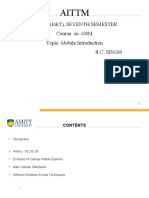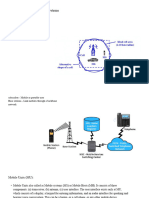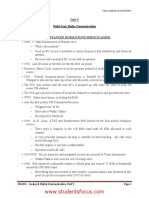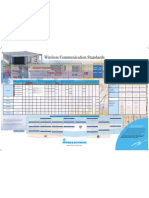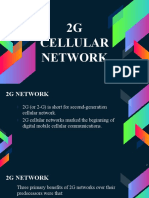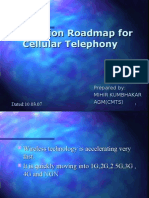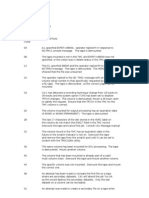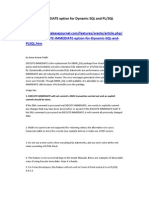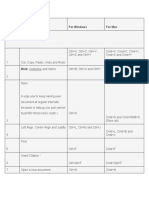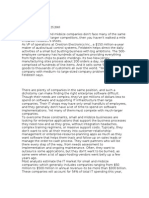0% found this document useful (0 votes)
20 views20 pagesLecture 4
The document compares analog and digital cellular systems, highlighting features such as traffic handling, processing ease, encryption capabilities, and noise levels. It details the specifications and limitations of first-generation (1G) analog systems like AMPS, as well as the advancements in second-generation (2G) digital systems like GSM, including improved capacity, data services, and security. Additionally, it outlines the evolution of wireless networks from 1G to 3G, emphasizing the transition to digital technology and enhanced functionalities.
Uploaded by
course5325Copyright
© © All Rights Reserved
We take content rights seriously. If you suspect this is your content, claim it here.
Available Formats
Download as PDF, TXT or read online on Scribd
0% found this document useful (0 votes)
20 views20 pagesLecture 4
The document compares analog and digital cellular systems, highlighting features such as traffic handling, processing ease, encryption capabilities, and noise levels. It details the specifications and limitations of first-generation (1G) analog systems like AMPS, as well as the advancements in second-generation (2G) digital systems like GSM, including improved capacity, data services, and security. Additionally, it outlines the evolution of wireless networks from 1G to 3G, emphasizing the transition to digital technology and enhanced functionalities.
Uploaded by
course5325Copyright
© © All Rights Reserved
We take content rights seriously. If you suspect this is your content, claim it here.
Available Formats
Download as PDF, TXT or read online on Scribd
/ 20


